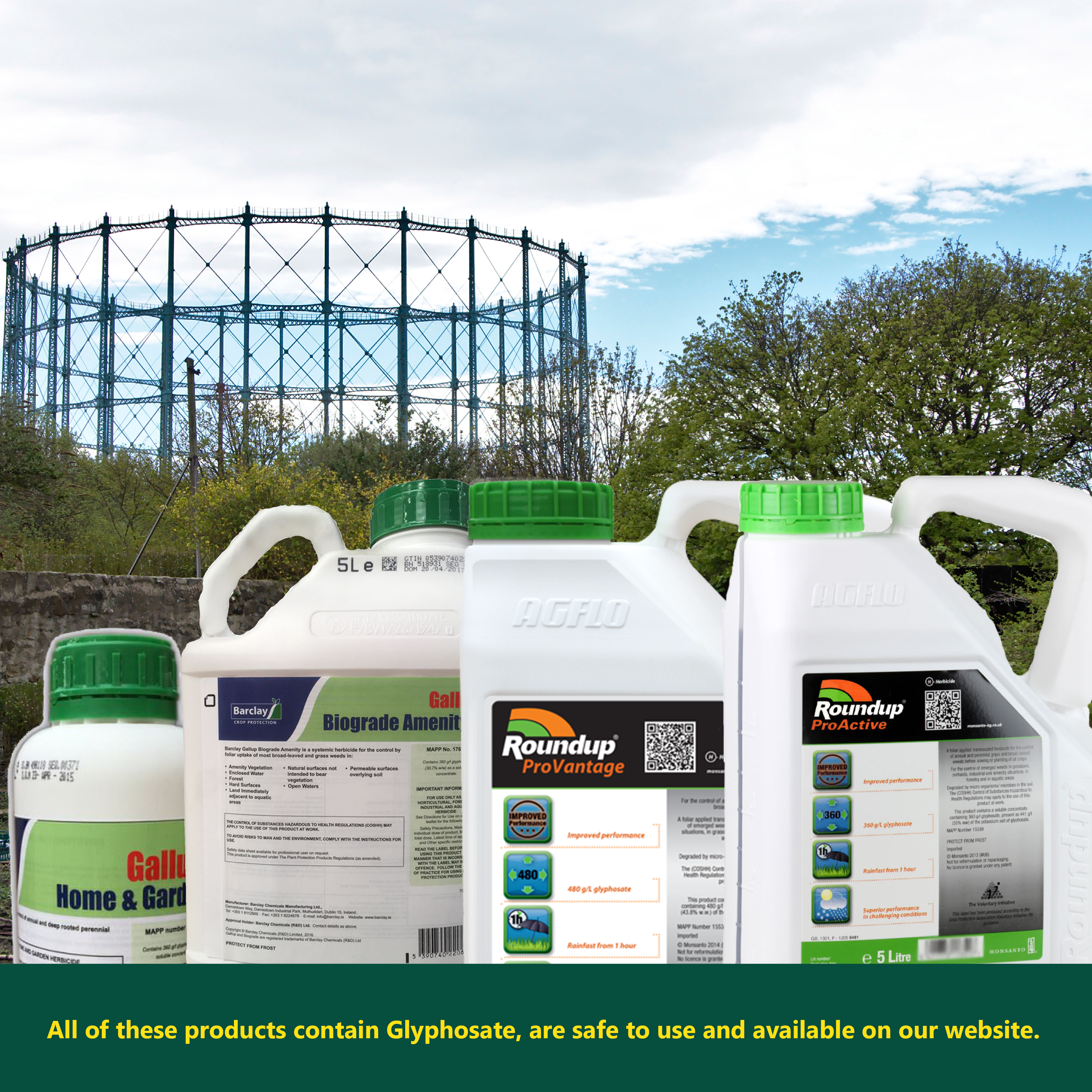Glyphosate - What Is It & Why It Is Now Safe To Use
In this blog our Technical Manager Chris Humphrey explains what Glyphosate actually is, and contrary to some reports, why it is now safe to use.
Glyphosate is a non-selective systemic herbicide used in agriculture, parks, gardens, railways, highways and industrial sites. It was first launched in the UK in 1974 by Monsanto under the trade name of Round Up. Known by farmers and gardeners as “Liquid Gold” its sale price was £55.00 for a 5 Ltr container, at a time when the average weekly wage was only £54.00 per week and a pint of milk was 5p, a loaf of bread was 14p and a pint of beer was only 20p.
Glyphosate works by preventing the plant from making certain proteins that it needs to grow. Glyphosate stops the shikimic acid pathway which is required to provide amino acids to the plant. It only affects plants as this pathway is not found in humans and animals as they make the amino acids required from food.
Toxicity is measured by the Lethal Dose 50 (LD50), this is the dose that has proven lethal to half of the laboratory animals tested. Glyphosate is registered as “slightly toxic” with an LD50 of 5600mg/Kg of body weight. Whereas the theobromine in the chocolate you put in your mouth is classed as “moderately toxic” with an LD50 of 1265mg/kg of body weight and the caffeine in your cup of coffee is classed as “very toxic” with an LD50 of 192mg/kg of body weight.
Because it is one of the safest herbicides, Glyphosate is widely used to control weed growth on public highways, footpaths and the railway network. Failure to control weeds in these situations would have dramatic effects on the safety and efficiency of the UK transport infrastructure. In 2017, Research undertaken by Oxford Economics showed that a ban on weed killers would add at least £228 million to the UK’s council tax bill each year.

Glyphosate is the active ingredient and originally most formulations used tallow amine as a surfactant to spread it over the plant surface. Tallow amines have side effects which include irritating human skin and eyes and are highly toxic to aquatic organisms. Tallow amines are found in many common household products such as soap, make-up and candles. These tallow amines had their authorisation for use in glyphosate withdrawn and the last date to be able to buy glyphosate products which contained it was 30th June 2017. There was a final use up date of 30th June 2018 after which it is illegal to use or even possess glyphosate products containing tallow amines.
Now, all glyphosate manufactured use different surfactants. Many common glyphosate formulations have a clean label with No Hazard Rating. Once sprayed, glyphosate binds tightly to soil particles and is then broken down by soil Bacteria often within a week or so. Glyphosate has a very low toxicity for fish and other aquatic life, so much so that some formulations are registered as safe for use on land immediately adjacent to aquatic areas, on enclosed waters and open water.
The Chemical Regulation Directorate, part of the UK Health & Safety Executive are responsible for the registration of all pesticides and they review the scientific evidence on a regular basis and then only approve a pesticide for use once completely satisfied that it is safe and appropriate to do so.
All liquid herbicides containing Glyphosate which are supplied by Collier Turf Care Ltd are clean label and have a Non Hazardous weedkiller COSHH classification, making them the preferred choice for the professional and homeowner alike.
By Chris Humphrey MBPR FQA, Technical Manager
For further advice on Glyphopsate products, contact Collier Turf Care on 01328 700600